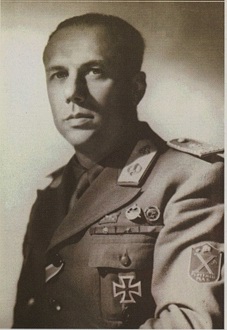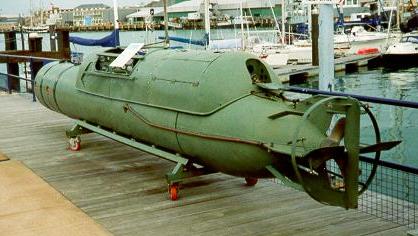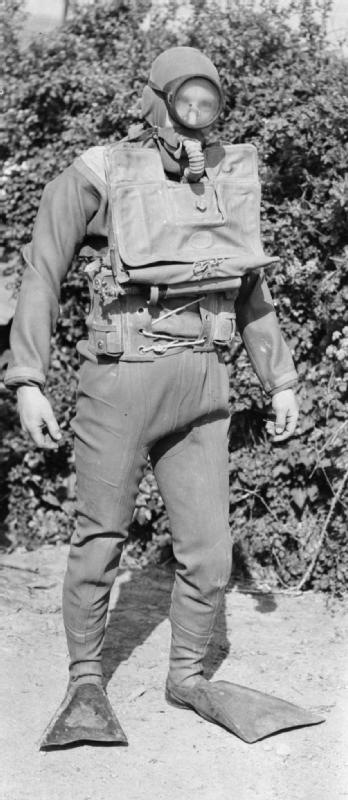|
Olterra
The auxiliary ship ''Olterra'' was a 5,000 ton Italian tanker scuttled by her own crew at Algeciras in the Bay of Gibraltar on 10 June 1940, after the entry of Italy in World War II. She was recovered in 1942 by a special unit of the Decima Flottiglia MAS to be used as an undercover base for Human torpedo, manned torpedoes in order to attack Allies of World War II, Allied shipping at Gibraltar. Construction and early career ''Olterra'' started life as the Tanker (ship), tanker ''Osage''. She was built in 1913 by Palmer's Ship Building and Iron Co Ltd, Tyneside, United Kingdom, for a German company. ''Osage'' was sold to the Standard Oil Company of New Jersey, Standard Oil Co in New York in 1914 and renamed ''Baton Rouge''. In 1925 she was again sold, this time to the European Shipping Co. Ltd of London and renamed ''Olterra''. As ''Olterra'' she passed through the hands of the British Oil Shipping Co. Ltd and in 1930 was bought by Andrea Zanchi in Genoa. On 10 June 1940, when ... [...More Info...] [...Related Items...] OR: [Wikipedia] [Google] [Baidu] |
Decima Flottiglia MAS
The ''Decima Flottiglia MAS'' (''Decima Flottiglia Motoscafi Armati Siluranti'', also known as ''La Decima'' or Xª MAS) (Italian for "10th Assault Vehicle Flotilla") was an Italian flotilla, with commando frogman unit, of the ''Regia Marina'' (Italian Royal Navy) created during the Fascist regime. The acronym '' MAS'' also refers to various light torpedo boats used by the Regia Marina during World War I and World War II. Decima MAS was active during the Battle of the Mediterranean and took part in a number of daring raids on Allied shipping. These operations involved surface speedboats (such as the raid on Souda Bay), manned torpedoes (the raid on Alexandria) and ''Gamma'' frogmen (against Gibraltar). During the campaign Decima MAS took part in more than a dozen operations which sank or damaged five warships (totalling 72,000 tons) and 20 merchant ships (totalling 130,000 GRT). In 1943, after the Italian dictator Benito Mussolini was ousted, Italy left the Tripartite Pac ... [...More Info...] [...Related Items...] OR: [Wikipedia] [Google] [Baidu] |
Human Torpedo
Human torpedoes or manned torpedoes are a type of diver propulsion vehicle on which the diver rides, generally in a seated position behind a fairing. They were used as secret naval weapons in World War II. The basic concept is still in use. The name was commonly used to refer to the weapons that Italy, and later (with a larger version) Britain, deployed in the Mediterranean and used to attack ships in enemy harbors. The human torpedo concept has occasionally been used by recreational divers, although this use is closer to midget submarines. History of common wartime models The concept of a small, manned submarine carrying a bomb was developed and patented by a British naval officer in 1909, but was never used during the First World War. The Italian Navy experimented with a primitive tiny sub (Mignatta) carrying two men and a limpet mine: this craft successfully sank Austro-Hungarian battleship SMS ''Viribus Unitis'' on 1 November 1918. The first truly practical human to ... [...More Info...] [...Related Items...] OR: [Wikipedia] [Google] [Baidu] |
Human Torpedo
Human torpedoes or manned torpedoes are a type of diver propulsion vehicle on which the diver rides, generally in a seated position behind a fairing. They were used as secret naval weapons in World War II. The basic concept is still in use. The name was commonly used to refer to the weapons that Italy, and later (with a larger version) Britain, deployed in the Mediterranean and used to attack ships in enemy harbors. The human torpedo concept has occasionally been used by recreational divers, although this use is closer to midget submarines. History of common wartime models The concept of a small, manned submarine carrying a bomb was developed and patented by a British naval officer in 1909, but was never used during the First World War. The Italian Navy experimented with a primitive tiny sub (Mignatta) carrying two men and a limpet mine: this craft successfully sank Austro-Hungarian battleship SMS ''Viribus Unitis'' on 1 November 1918. The first truly practical human to ... [...More Info...] [...Related Items...] OR: [Wikipedia] [Google] [Baidu] |
Licio Visintini
Licio Visintini (12 February 1915 – 8 December 1942) was an Italian naval officer during World War II. Visintini was decorated for his operations against Allied shipping in Gibraltar during the Battle of the Mediterranean. His brother Mario Visintini was a famous flying ace; both were killed during the war. Biography Visintini joined the Italian Naval Academy in Livorno in 1933, and received his appointment as Ensign in 1937. Initially assigned on surface ships, he participated in missions during the Spanish Civil War; he then served on the submarines ''Narvalo'' and then on ''Atropo''. While on the latter, in April 1939, he participated in the operations for the Italian invasion of Albania. On 10 June 1940, when Italy entered World War II, Visintini was serving on the submarine ''Torelli'', and participated in its first mission in the Atlantic Ocean. On his return, he asked to be assigned to the Tenth MAS Flotilla in La Spezia, where he became assault craft operator. ... [...More Info...] [...Related Items...] OR: [Wikipedia] [Google] [Baidu] |
Frogmen
A frogman is someone who is trained in scuba diving or swimming underwater in a tactical capacity that includes military, and in some European countries, police work. Such personnel are also known by the more formal names of combat diver, combatant diver, or combat swimmer. The word ''frogman'' first arose in the stage name ''The Fearless Frogman'' of Paul Boyton in the 1870s and later was claimed by John Spence, an enlisted member of the U.S. Navy and member of the OSS Maritime Unit, to have been applied to him while he was training in a green waterproof suit. The term ''frogman'' is occasionally used to refer to a civilian scuba diver. Some sport diving clubs include the word ''Frogmen'' in their names. The preferred term by scuba users is ''diver'', but the ''frogman'' epithet persists in informal usage by non-divers, especially in the media and often referring to professional scuba divers, such as in a police diving role. In the U.S. military and intelligence community, ... [...More Info...] [...Related Items...] OR: [Wikipedia] [Google] [Baidu] |
Combat Swimmers
A frogman is someone who is trained in scuba diving or swimming underwater in a tactical capacity that includes military, and in some European countries, police work. Such personnel are also known by the more formal names of combat diver, combatant diver, or combat swimmer. The word ''frogman'' first arose in the stage name ''The Fearless Frogman'' of Paul Boyton in the 1870s and later was claimed by John Spence, an enlisted member of the U.S. Navy and member of the OSS Maritime Unit, to have been applied to him while he was training in a green waterproof suit. The term ''frogman'' is occasionally used to refer to a civilian scuba diver. Some sport diving clubs include the word ''Frogmen'' in their names. The preferred term by scuba users is ''diver'', but the ''frogman'' epithet persists in informal usage by non-divers, especially in the media and often referring to professional scuba divers, such as in a police diving role. In the U.S. military and intelligence communit ... [...More Info...] [...Related Items...] OR: [Wikipedia] [Google] [Baidu] |
Lionel Crabb
Lieutenant-Commander Lionel Kenneth Phillip Crabb, (28 January 1909 – presumed dead 19 April 1956), known as Buster Crabb, was a Royal Navy frogman and diver who vanished during a reconnaissance mission for MI6 around a Soviet cruiser berthed at Portsmouth Dockyard in 1956. Early life Lionel Crabb was born in 1909 to Hugh Alexander Crabb and Beatrice (née Goodall) of Streatham, south-west London. They were a poor family; Hugh Crabb was a commercial traveller for a firm of photographic merchants. In his youth Crabb held many jobs but after two years training for a career at sea in the school ship HMS ''Conway'' he joined the merchant navy and the Royal Naval Volunteer Reserve before the Second World War. Second World War At the outbreak of the Second World War, Crabb was first an army gunner. Then, in 1941, he joined the Royal Navy. The next year he was sent to Gibraltar where he worked in a mine and bomb disposal unit to remove the Italian limpet mines that enemy di ... [...More Info...] [...Related Items...] OR: [Wikipedia] [Google] [Baidu] |
Algeciras
Algeciras ( , ) is a municipality of Spain belonging to the province of Cádiz, Andalusia. Located in the southern end of the Iberian Peninsula, near the Strait of Gibraltar, it is the largest city on the Bay of Gibraltar ( es, Bahía de Algeciras, link=no). The Port of Algeciras is one of the largest ports in Europe and the world in three categories: container, cargo and transshipment. The urban area straddles the small Río de la Miel, which is the southernmost river of continental Europe. As of 1 January 2020, the municipality had a registered population of 123,078, second in its province after Jerez de la Frontera and greater than Cádiz city population. It forms part of the ''comarca'' of Campo de Gibraltar. The surrounding metro area also includes the municipalities of Los Barrios, La Línea de la Concepción, Castellar de la Frontera, Jimena de la Frontera, San Roque and Tarifa, with a population of 263,739. Name Algeciras' site was also that of Roman cities called ... [...More Info...] [...Related Items...] OR: [Wikipedia] [Google] [Baidu] |
Military Honors
A military funeral is a memorial or burial rite given by a country's military for a soldier, sailor, marine or airman who died in battle, a veteran, or other prominent military figures or heads of state. A military funeral may feature guards of honor, the firing of volley shots as a salute, drumming and other military elements, with a flag draping over the coffin. Canada Canadian military funerals involve many rituals seen in other parts of the world. The Royal Canadian Horse Artillery use a 25-pounder gun and limber as the funeral vehicle. Muffled drums accompany the graveside processional. The deceased's headdress, insignia and medals are borne on a velvet cushion into the funeral service. Volleys are fired over the grave when the body is interred. Countries in the Commonwealth duplicate the British military drill and ceremony. The Canadian funeral described above typifies the funerary service. The bugle tune ''Last Post'' is played as the body is interred. Chile In Ch ... [...More Info...] [...Related Items...] OR: [Wikipedia] [Google] [Baidu] |
Forecastle
The forecastle ( ; contracted as fo'c'sle or fo'c's'le) is the upper deck of a sailing ship forward of the foremast, or, historically, the forward part of a ship with the sailors' living quarters. Related to the latter meaning is the phrase " before the mast" which denotes anything related to ordinary sailors, as opposed to a ship's officers. History and design In medieval shipbuilding, a ship of war was usually equipped with a tall, multi-deck castle-like structure in the bow of the ship. It served as a platform for archers to shoot down on enemy ships, or as a defensive stronghold if the ship were boarded. A similar but usually much larger structure, called the aftcastle, was at the aft end of the ship, often stretching all the way from the main mast to the stern. Having such tall upper works on the ship was detrimental to sailing performance. As cannons were introduced and gunfire replaced boarding as the primary means of naval combat during the 16th century, the medieval ... [...More Info...] [...Related Items...] OR: [Wikipedia] [Google] [Baidu] |
Maiale Cockpit
The word maiale (plural ''maiali'') is: *Italian language, Italian for "pig" *An Italian word for a manned torpedo * Nicholas Maiale, a former Democratic member of the Pennsylvania House of Representatives and a native of Philadelphia {{disambiguation ... [...More Info...] [...Related Items...] OR: [Wikipedia] [Google] [Baidu] |
Depth Charges
A depth charge is an anti-submarine warfare (ASW) weapon. It is intended to destroy a submarine by being dropped into the water nearby and detonating, subjecting the target to a powerful and destructive hydraulic shock. Most depth charges use high explosive charges and a fuze set to detonate the charge, typically at a specific depth. Depth charges can be dropped by ships, patrol aircraft, and helicopters. Depth charges were developed during World War I, and were one of the first viable methods of attacking a submarine underwater. They were widely used in World War I and World War II, and remained part of the anti-submarine arsenals of many navies during the Cold War, during which they were supplemented, and later largely replaced, by anti-submarine homing torpedoes. A depth charge fitted with a nuclear warhead is also known as a "nuclear depth bomb". These were designed to be dropped from a patrol plane or deployed by an anti-submarine missile from a surface ship, or another ... [...More Info...] [...Related Items...] OR: [Wikipedia] [Google] [Baidu] |









